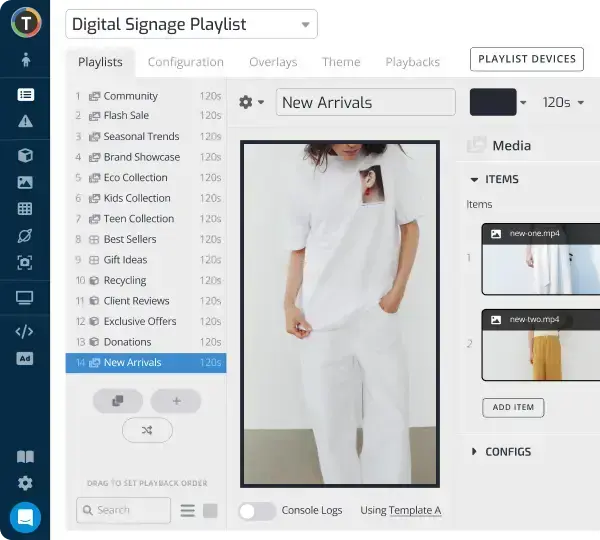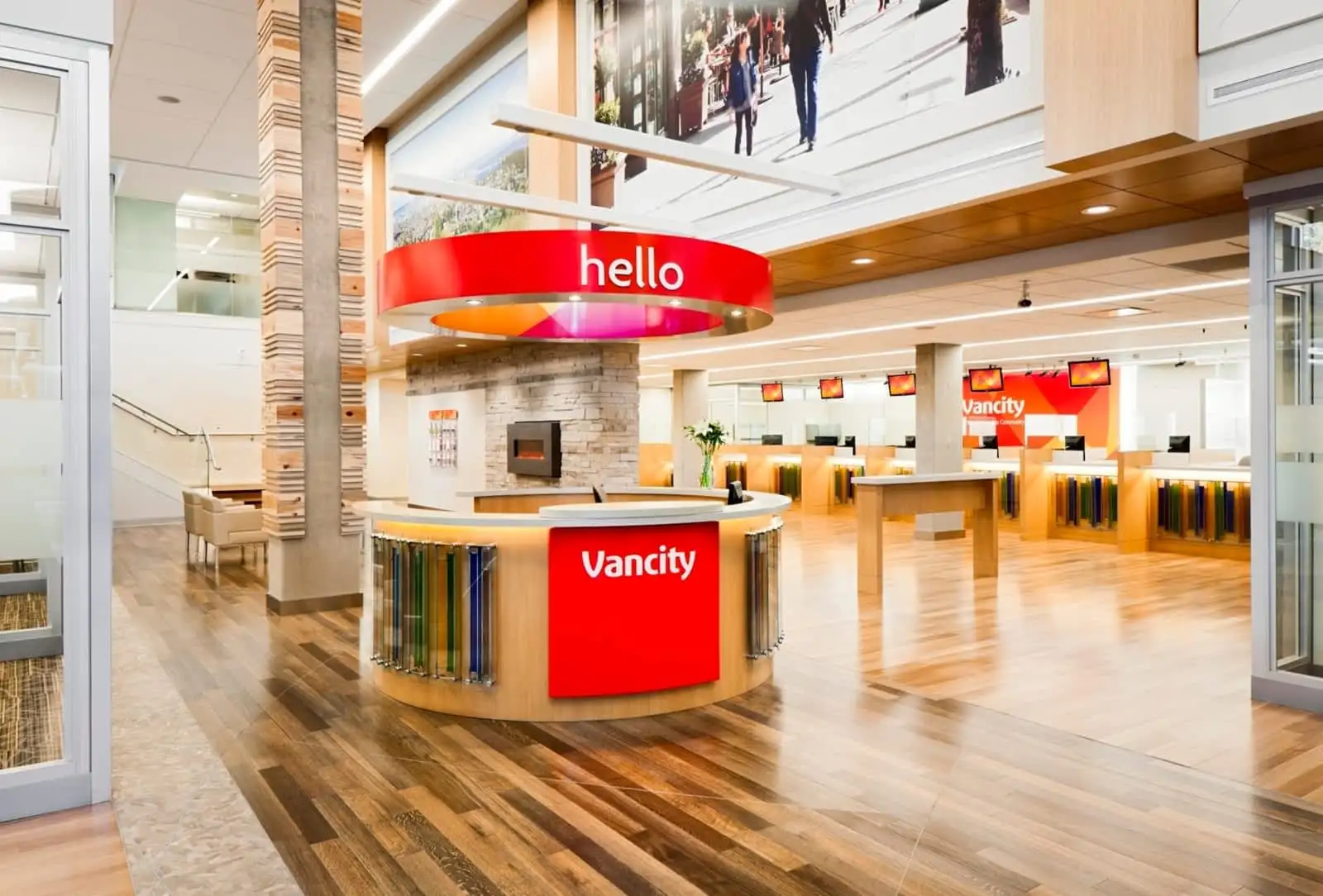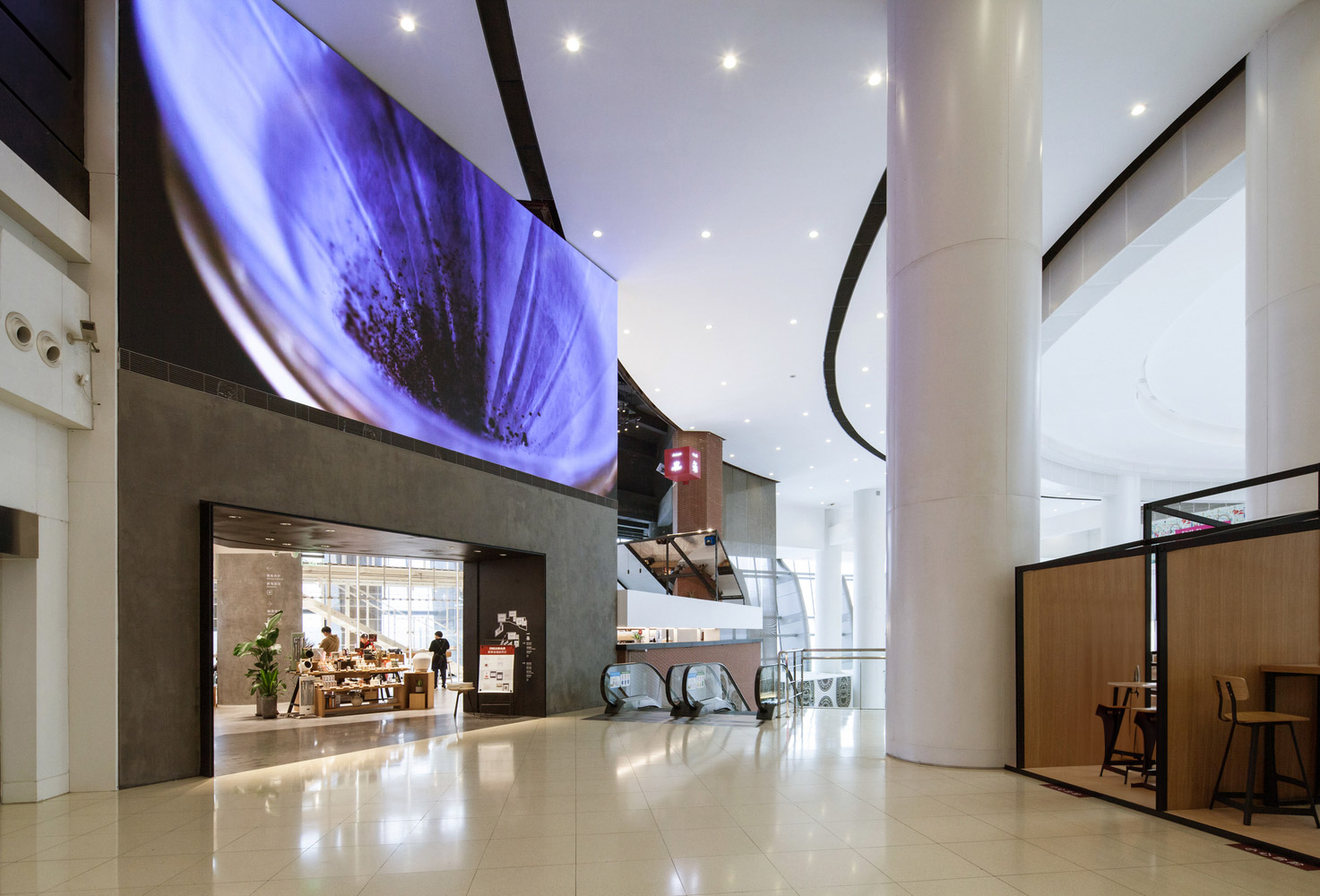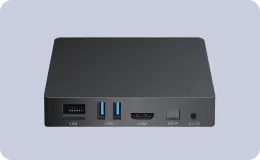Healthcare Digital Signage: Transforming Communication in Modern Hospitals
WRITTEN BY: TelemetryTV, 02-10-2025

In a bustling city hospital, visitors often stand in lobbies with a look of faint bewilderment—navigating a maze of corridors and wings can be a daunting task, especially when every minute counts. Enter healthcare digital signage: a series of networked screens, from large-format displays to interactive kiosks, designed to share information quickly and consistently in healthcare facilities. Once relegated to airports and retail stores, digital signage has now become a vital communication tool in hospitals, clinics, and care centers of all sizes.
Today, more than half of U.S. healthcare institutions have at least one digital signage system in place, and over 70% say it improves patient satisfaction scores. These displays do more than replace static posters: they enhance wayfinding, streamline patient check-in, educate visitors on health topics, and even integrate with emergency alert systems. In a setting where small communication failures can have serious consequences, digital signage delivers timely, accurate information to patients, visitors, and staff.
The Rise of Digital Signage in Healthcare
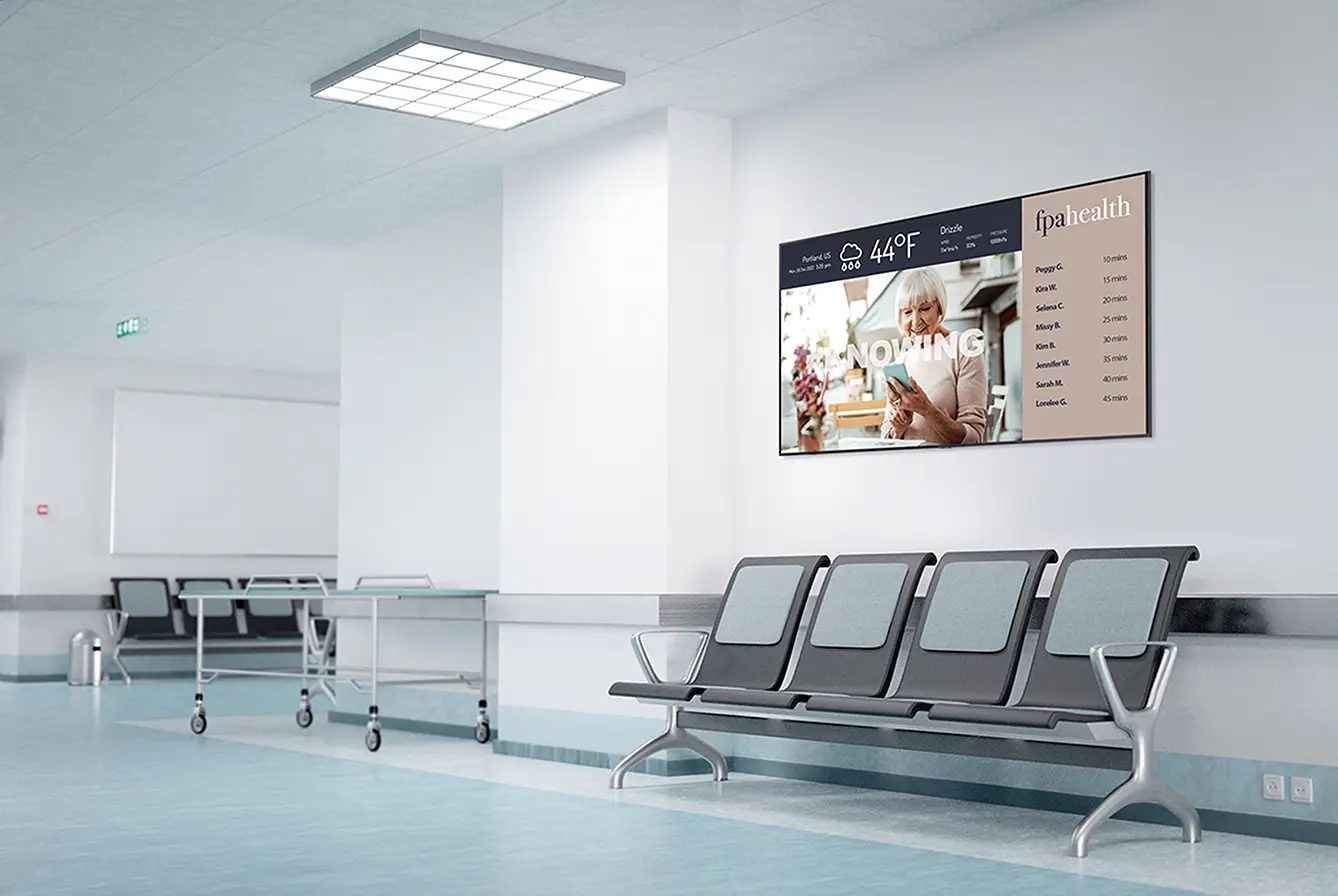
Healthcare leaders know that informed patients are happier patients. Studies show that when educational content is displayed in waiting areas, perceived wait times can drop by up to 35%. Patients report feeling less anxious if they have engaging or informative material to consume. “We introduced digital signage in our main lobby and saw immediate benefits,” says the communications director at a large Midwestern hospital. “People were no longer missing appointments because they took a wrong turn in the hallway.”
Crucial here is the ability to update content in real time. If an urgent policy change arises—an infectious disease guideline or a new triage process—messages can be posted instantly throughout the facility. For large institutions, this centralized control of messaging saves labor hours previously spent changing bulletin boards, printing flyers, or manually distributing pamphlets.
Top Benefits: From Efficiency to Compliance

1. Improving Patient Experience. Waiting for medical attention or test results can be stressful, and unanswered questions often amplify that anxiety. Digital signage alleviates confusion by prominently displaying directions, estimated wait times, and educational content. This improves overall satisfaction and can even influence reimbursement rates in certain healthcare systems, where patient satisfaction metrics affect funding.
2. Streamlining Staff Communication. Hospitals are complex organizations—getting an urgent message to all employees quickly is a perpetual challenge. Dedicated, staff-facing digital signage can relay changes to shift schedules, policy announcements, or training reminders. Some emergency rooms also deploy real-time status boards that display bed availability or surgery schedules. This keeps clinical teams coordinated and reduces reliance on lengthy email threads or hallway bulletins.
3. Enhancing Operational Efficiency. Checking in or updating personal information at a self-service kiosk, rather than waiting in line for the reception desk, can slash registration times. If patients can self-triage minor queries or find their own way to an X-ray suite, medical staff can focus on more specialized tasks. Hospitals using digital signage for queue management have reported up to a 22% reduction in missed appointments.
4. Supporting Compliance and Safety. Hospitals face strict regulations governing patient privacy and emergency preparedness. Modern digital signage software offers robust security and user access controls, crucial in adhering to HIPAA requirements. Sensitive content can be restricted to staff-only screens, ensuring no unauthorized disclosures. Additionally, integrating with emergency alert systems allows every display to broadcast evacuation routes and safety instructions in moments of crisis.
Use Cases on the Ground
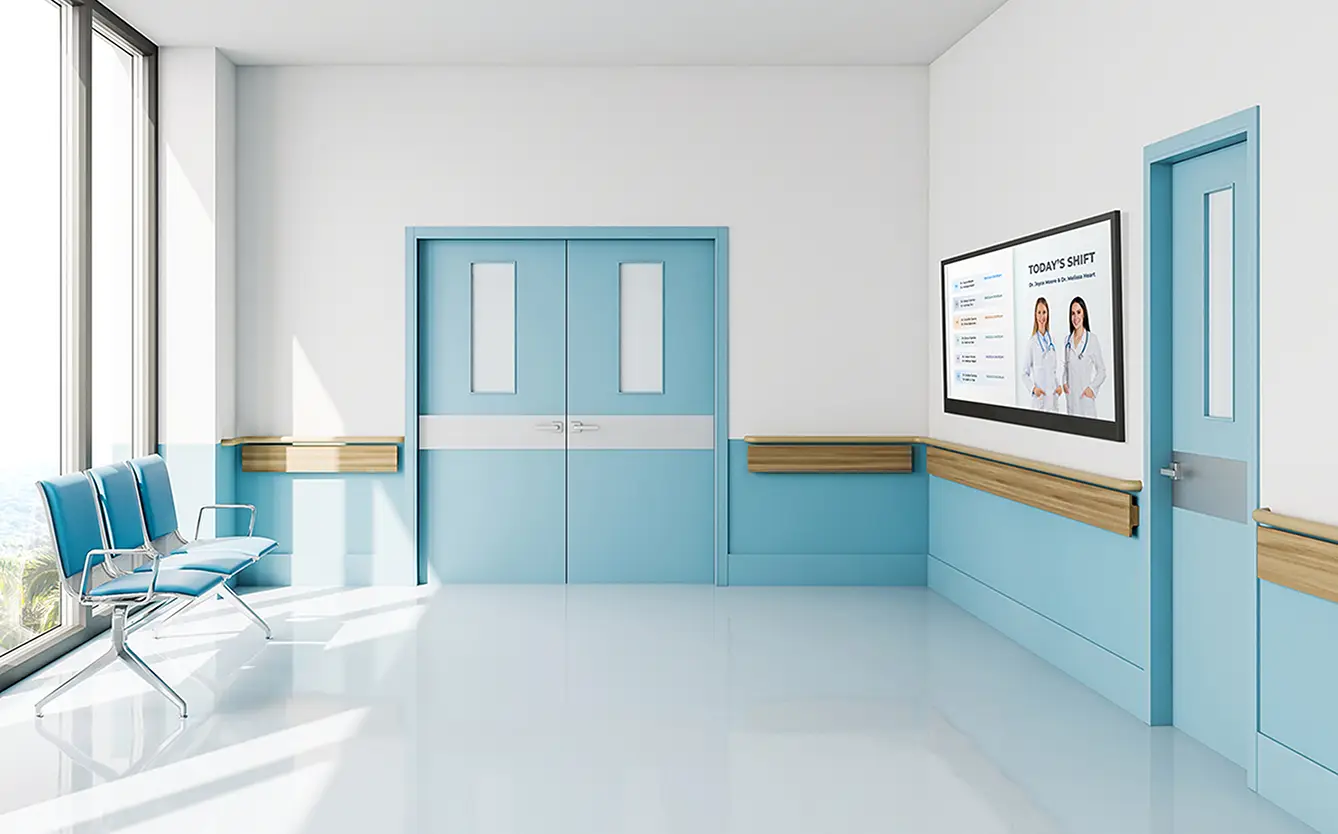
From the lobby to the operating room, digital signage meets a variety of needs:
• Wayfinding: Large facilities use interactive touchscreens near entrances to help visitors locate departments in seconds. Some kiosks even provide step-by-step directions with turn-by-turn visuals. Studies show 88% of patients find digital wayfinding helpful, diminishing the “lost visitor” phenomenon and reducing delayed appointments.
• Emergency Alerts: A single keystroke can override all displays to show a code red or active lockdown message. This type of institution-wide alert mechanism is increasingly standard, as rapid dissemination of critical information saves valuable seconds during life-threatening emergencies.
• Staff Status Boards: In operating suites, digital boards show active surgeries, upcoming cases, and bed availability. This replaces dry-erase boards and manual trackers. Administrative messages—such as reminders about new protocols—can be scheduled to appear between surgery updates, keeping essential info visible.
• Educational Content: Waiting rooms are prime real estate for looping wellness videos or procedure overviews. A cardiology clinic might show animated clips on recognizing heart attack symptoms; an orthopedic unit might display exercises for joint recovery. Nearly 75–78% of large hospitals now use digital signage for patient education—both to lighten staff workloads and encourage healthier lifestyles.
Best Practices for Implementation

Align Strategy with Goals. Identify precise objectives: Are you aiming to reduce patient anxiety, boost staff communication, or increase efficiency? Departments from IT to nursing should share input to define a roadmap that supports each unit’s needs.
Prioritize Placement. Screens must be located where people need information. Lobbies, corridor intersections, and waiting rooms are ideal for patient-facing signage. Staff lounges and nurse stations work best for internal announcements. Always consider sightlines, ambient light, and height so content is easy to read.
Curate Relevant Content. A rotating playlist of timely, useful information keeps viewers engaged. The most effective hospitals often appoint a small team to manage digital signage content. They monitor analytics—such as how often certain announcements run—and cycle in fresh updates. Automation helps by pulling real-time feeds (e.g., queue lengths or news) into displays.
Ensure Accessibility. Healthcare serves the entire population, so content should accommodate those with low vision or limited mobility. Use large, high-contrast fonts, consider closed captioning on videos, and opt for software that supports multiple languages. ADA-compliant mounting heights and touchless interfaces further broaden accessibility.
Adhere to Security and Compliance. Medical environments have stringent rules about patient privacy. Avoid displaying confidential details in public areas. Protect media players in locked enclosures. Use a secure, enterprise-ready digital signage software with permission-based controls to manage content and mitigate unauthorized changes.
Iterate and Maintain. Conduct pilot tests in one department before a full-scale launch. Gather feedback, address issues, and roll out in phases. Budget for ongoing maintenance and content updates. A common error is letting a well-designed system show stale, outdated information.
Calculating ROI: From Cost Savings to Revenue Opportunities
Most hospital administrators look for demonstrable returns before approving a new technology outlay. While digital signage involves upfront costs for screens, media players, and installation, the long-term gains can be compelling:
• Lower Printing Expenses. Sizable facilities spend heavily on brochures, flyers, and static signage. Converting to digital can result in four- to five-figure annual savings on paper and ink alone.
• Efficiency Gains. Self-check-in kiosks free up front-desk staff. Realtime emergency notifications remove the need for costly overhead paging systems. Taken together, these productivity boosts allow staff to focus on care, potentially improving patient throughput.
• Better Patient Satisfaction = Better Funding. In certain reimbursement models, high satisfaction scores translate to financial rewards. If digital signage can reduce confusion, waiting anxiety, or missed appointments, it can indirectly contribute to revenue.
• Advertising and Promotion. Although delicate in a healthcare setting, hospitals sometimes show pertinent ads from local service partners or highlight in-house revenue-generating services (like elective procedures or specialty clinics). This can offset software subscription costs.
The Future of Healthcare Digital Signage
Trends suggest healthcare digital signage will only become more sophisticated. Large institutions increasingly seek solutions that integrate with Internet of Things (IoT) devices, allowing real-time data—like ER wait times or bed availability—to appear automatically. Artificial intelligence may soon tailor content to peak traffic hours, automatically rotating languages based on known patient demographics.
Touchless interactions, accelerated by public health concerns, are another fast-emerging frontier. Voice-activated wayfinding kiosks and QR-code-based systems are already in pilot stages at hospitals nationwide. As device costs decline and cloud-based systems become more common, experts predict even small clinics will adopt advanced digital signage.
Moreover, new display technologies—from energy-efficient e-paper to high-resolution microLEDs—are set to redefine how hospitals present information. Some pediatric wards, for instance, are testing interactive walls that keep young patients occupied, reducing stress and potentially improving clinical outcomes.
Why TelemetryTV?
For healthcare organizations seeking a robust system, TelemetryTV offers digital signage software tailored to complex environments. With enterprise-level security and user permission settings that address HIPAA compliance, TelemetryTV has become a go-to for facilities requiring flexible, scalable solutions. Its cloud-based system ensures real-time content updates across multiple locations, while integrated hardware options simplify deployment. Hospitals can unify their communication strategy—wayfinding, staff announcements, patient education, and emergency alerts—into a single, manageable platform.
Conclusion: Time to Get on Board
In healthcare, clear communication can be as valuable as cutting-edge treatments. Digital signage has swiftly progressed from a nice-to-have technology to an indispensable tool—one that shapes how patients perceive their care and how efficiently staff can deliver it. Its ability to broadcast real-time information, reduce anxiety, and reinforce safety standards makes it a worthy investment for medium and large healthcare institutions alike.
Elevate Your Healthcare Communications
Explore how TelemetryTV’s digital signage software and hardware solutions transform healthcare communications. When patients don’t waste time lost in hallways, staff can deliver care more efficiently—and everyone benefits.
Start for Free